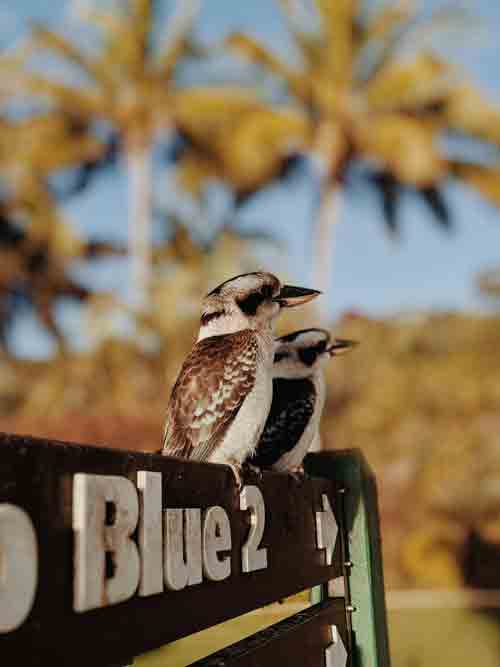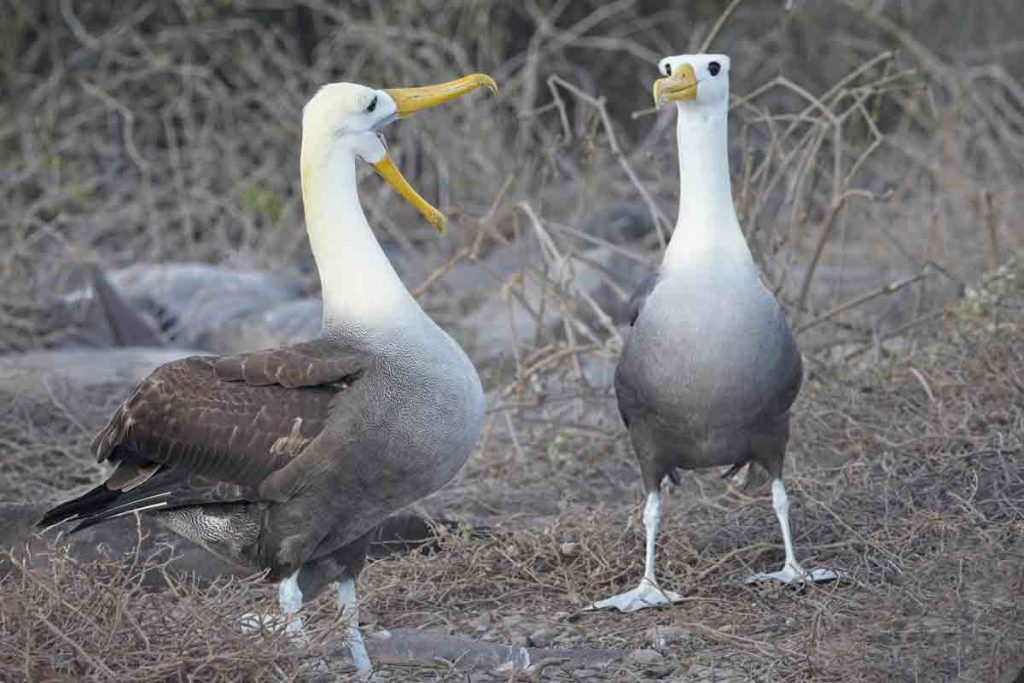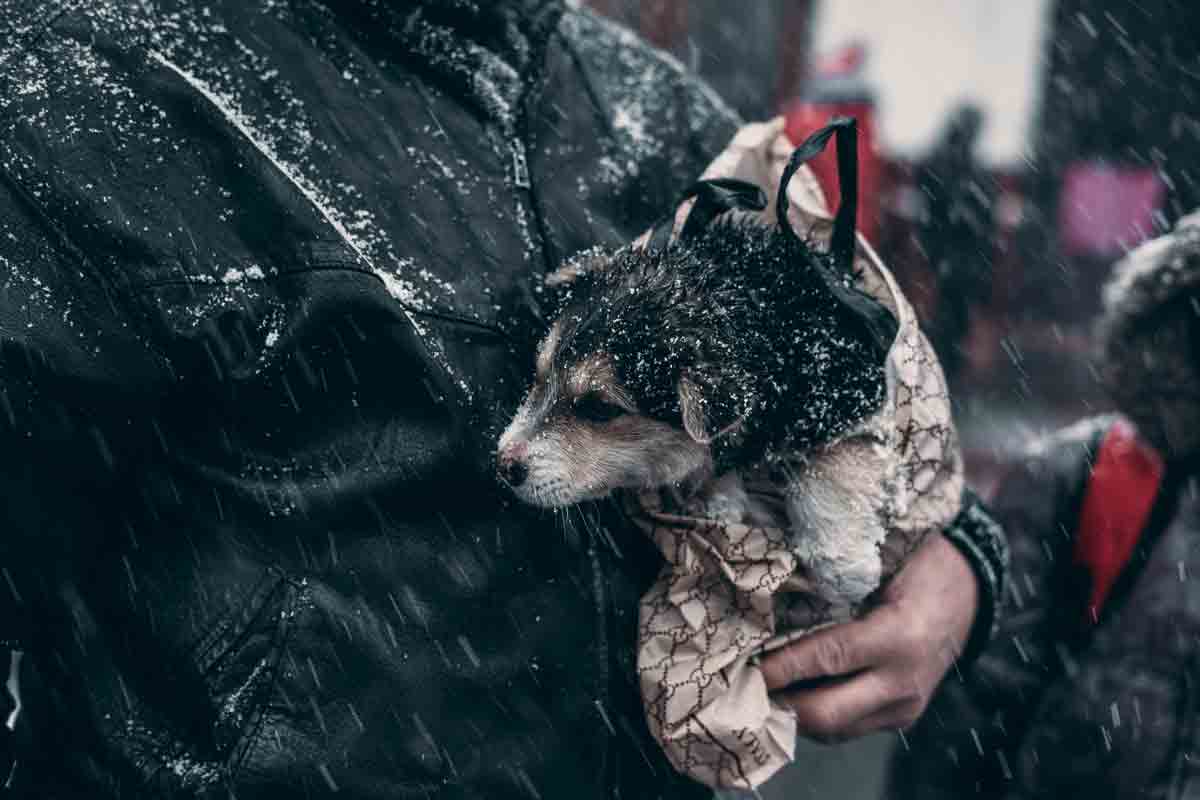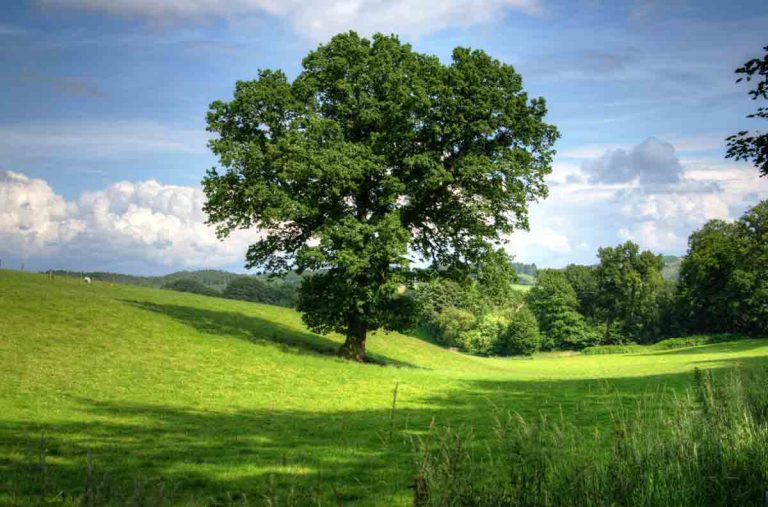Paragraph On Save Animals – Awareness, Empathy, and Action
Do you know why I wrote this paragraph on save animals? Because the rapid pace of urbanization and industrialization seems to overshadow the natural world, there is an urgent need to shed light on a cause that often goes unnoticed – saving animals.
From majestic elephants trudging through the savannah to tiny bees buzzing around in our gardens, every creature plays a vital role in maintaining the delicate balance of our ecosystem. Yet, we find ourselves at a critical juncture where countless species are facing extinction due to human activities such as deforestation, poaching, and pollution.
The time has come for us to rise up as stewards of this planet and take action to protect and preserve these irreplaceable members of our global community before it’s too late.
| Human Activity | Impact on Animals |
|---|---|
| Habitat Destruction | Loss of habitat due to deforestation, urbanization, etc. |
| Pollution | Contamination of air, water, and soil with toxins |
| Climate Change | Altered habitats, disrupted ecosystems, extreme weather |
| Hunting & Poaching | Illegal killing for meat, trophies, or body parts |
| Overfishing | Depletion of fish populations due to excessive fishing |
| Pollution | Chemical pollution from industrial, agricultural sources |
| Introduction of Invasive Species | Disruption of ecosystems, competition for resources |
| Deforestation | Destruction of forests leading to loss of biodiversity |
| Urbanization | Encroachment on natural habitats for development |
| Wildlife Trade | Capture and trade of animals, leading to exploitation |
| Agricultural Practices | Pesticide use, habitat conversion for agriculture |
| Infrastructure Development | Roads, dams, and other constructions fragment habitats |
Paragraph On Save Animals 100 Words
Saving animals is not just a moral imperative but also crucial for maintaining the balance of ecosystems. Every species plays a unique role in the intricate web of life, and the loss of even one can have ripple effects throughout entire habitats. Conservation efforts aimed at preserving animal populations involve protecting their habitats, combating illegal wildlife trade, and raising awareness about the importance of biodiversity. By safeguarding animals, we ensure their survival and secure our planet’s future for generations to come. It’s our responsibility to act as stewards of the natural world, advocating for the protection of all creatures, big and small, that share our planet.
Paragraph On Save Animals 150 Words
Saving animals is very important because they are a crucial part of our world. Animals, big and small, play important roles in keeping our environment balanced. For example, bees help pollinate flowers, which allows plants to grow and produce food. Tigers, elephants, and many other animals are part of the beauty of nature.
Unfortunately, some animals are in danger of disappearing forever because of things like pollution, deforestation, and hunting. But there are things we can do to help save them. We can start by learning about animals and their habitats and then doing our best to protect them. We can also reduce, reuse, and recycle to help keep the environment clean and safe for animals to live in.
Additionally, we can support organizations that work to save endangered species and their habitats. By working together, we can make a big difference in saving animals and making sure they have a bright future on our planet. So let’s do our part to protect and save animals!
Save Animals Paragraph 200 Words
Where Earth grappling with environmental challenges, the imperative to save animals has never been more urgent. Across continents, species face the brink of extinction due to habitat destruction, poaching, climate change, and human-wildlife conflicts. From majestic elephants to delicate pollinators, each creature plays a vital role in maintaining the delicate balance of ecosystems.
This urgent call to action extends beyond individual species, encompassing broader issues of animal welfare, including the ethical treatment of domestic animals and the protection of wildlife from exploitation and cruelty. Furthermore, the preservation of natural habitats is paramount, as it not only safeguards biodiversity but also ensures the survival of countless species dependent on these ecosystems for their livelihoods.
Efforts to save animals are multifaceted, encompassing initiatives such as habitat conservation, wildlife rehabilitation, and advocacy against practices like wildlife trafficking and factory farming. Additionally, promoting responsible pet ownership and supporting adoption from shelters are crucial steps in reducing the number of homeless animals and alleviating pressure on wild populations.
As stewards of this planet, it is incumbent upon us to recognize our interconnectedness with all living beings and take concrete actions to protect and preserve them for future generations. Through education, legislation, and collective action, we can safeguard the rich tapestry of life on Earth and ensure a sustainable future where humans and animals thrive together.
Save Animals Paragraph 250 Words
Saving animals is of paramount importance for the preservation of biodiversity and the well-being of our planet. Every species, from the tiniest insect to the mightiest mammal, plays an indispensable role in the intricate web of life. When we protect animals, we safeguard entire habitats and the countless life forms that depend on them.
Moreover, animals contribute directly to human welfare in various ways. They serve as sources of food, medicine, and inspiration for scientific discoveries. For instance, many pharmaceuticals are derived from compounds found in plants and animals. Additionally, animals provide essential ecosystem services such as pollination, seed dispersal, and pest control, which are vital for agricultural productivity and human survival.
Furthermore, the ethical imperative to save animals stems from our recognition of their inherent value and right to exist. As sentient beings capable of experiencing pain, pleasure, and complex emotions, animals deserve our respect and protection from harm.
Conservation efforts aimed at saving animals also have significant economic benefits. Healthy ecosystems support industries like tourism, fisheries, and agriculture, which generate revenue and livelihoods for millions of people worldwide. By preserving animal populations and their habitats, we ensure the sustainability of these industries for future generations.
In conclusion, saving animals is not just a moral obligation but also a practical necessity for the well-being of our planet and future generations. Through concerted conservation actions, we can secure a harmonious coexistence between humans and the diverse array of species that share our planet.
Paragraph On Save Animals 300 Words+
In our vast and diverse world, animals play an integral role in maintaining ecological balance and enriching our lives in ways we may not even fully comprehend. However, many species face imminent threats due to human activities ranging from habitat destruction to illegal poaching. As stewards of this planet, we must take action to protect and save animals from extinction. This article explores the importance of saving animals and suggests actionable steps we can take to make a difference.
Animals are essential components of ecosystems, contributing to biodiversity which ensures the stability and resilience of natural environments. Each species, no matter how small, plays a unique role in the intricate web of life.
Many animals are keystone species, meaning their presence or absence significantly impacts the ecosystem. For instance, predators help control prey populations, preventing overgrazing and maintaining vegetation health.
Wildlife tourism and ecotourism generate substantial revenue globally, benefiting local communities and economies. Protecting animals ensures the sustainability of these industries, creating jobs and fostering economic growth.
Animals hold the key to unlocking numerous scientific breakthroughs, from medical advancements to understanding complex behaviors and ecological processes. Saving them preserves opportunities for future discoveries and innovations.
Protecting and restoring natural habitats is critical for the survival of countless species. Support conservation organizations working to establish and manage protected areas, and advocate for policies that prioritize habitat preservation.
Illegal wildlife trafficking poses a significant threat to many species, driving them towards extinction. Support efforts to combat this trade by raising awareness, reporting illegal activity, and avoiding products derived from endangered animals.
Be mindful of the products you consume and their impact on wildlife habitats. Choose sustainably sourced goods and avoid products made from endangered species, such as ivory, exotic animal skins, and traditional medicines containing wildlife derivatives.
Raise awareness about the importance of wildlife conservation within your community and beyond. Support educational initiatives, volunteer with conservation organizations, and advocate for policies that protect animals and their habitats.
Adopt from shelters or reputable breeders, and never purchase animals from illegal or unethical sources. Spay and neuter pets to prevent overpopulation, and provide proper care and enrichment to ensure their well-being.
So saving animals is not just a moral obligation but a necessity for the health and sustainability of our planet. By recognizing the interconnectedness of all living beings and taking proactive steps to protect and conserve them, we can ensure a brighter future for both animals and humans alike. Let us embrace our role as stewards of the Earth and work together to safeguard the rich tapestry of life that surrounds us.
Helpful Word Meaning
| Word | Meaning |
|---|---|
| Conservation | The act of preserving, protecting, or restoring the natural environment, including wildlife and habitats. |
| Preservation | The act of maintaining or safeguarding something, such as wildlife, from harm, loss, or decay. |
| Wildlife | Animals living in their natural habitat, often referring to those not domesticated or tame. |
| Endangered | Species that are at risk of extinction due to various factors such as habitat loss, poaching, or pollution. |
| Habitat | The natural environment or home of an organism, including the physical and biological factors that affect it. |
| Biodiversity | The variety of life forms on Earth, including diversity within species, between species, and of ecosystems. |
| Conservationist | Someone who actively works to protect and preserve the natural environment and its resources. |
| Ecosystem | A biological community of interacting organisms and their physical environment. |
| Poaching | Illegal hunting or capturing of wildlife, usually for profit or consumption. |
| Sustainability | The ability to maintain ecological balance and preserve natural resources for current and future generations. |

How to Save Animals?
Saving animals involves a combination of individual actions, community efforts, and policy changes. Here are some ways you can contribute to animal conservation and welfare:
- Adopt, Don’t Shop: If you’re considering getting a pet, adopt from a shelter or rescue organization instead of buying from a pet store or breeder. This helps reduce the demand for commercially bred animals and provides homes for those in need.
- Spay and Neuter Pets: Help prevent overpopulation by spaying and neutering your pets. This reduces the number of animals ending up in shelters or on the streets.
- Support Conservation Organizations: Donate to or volunteer with organizations dedicated to protecting endangered species and their habitats. Examples include the World Wildlife Fund, the International Union for Conservation of Nature (IUCN), and local wildlife rehabilitation centers.
- Practice Responsible Wildlife Viewing: If you enjoy wildlife watching, do so responsibly. Respect animals’ space, never feeds wild animals, and follow guidelines provided by parks and conservation areas.
- Reduce, Reuse, Recycle: Reduce your environmental footprint to help conserve habitats and ecosystems that animals depend on. Use reusable products, recycle whenever possible, and reduce energy consumption.
- Advocate for Animal Rights: Speak up for animals by supporting legislation and policies that protect them from cruelty and exploitation. Write to lawmakers, sign petitions, and participate in peaceful demonstrations.
- Educate Yourself and Others: Learn about animal welfare issues and share this knowledge with others. Host educational events, share informative articles on social media, and engage in discussions about animal rights and conservation.
- Support Sustainable Practices: Choose products and companies that prioritize animal welfare and sustainability. Look for certifications like Fair Trade, Rainforest Alliance, or Certified Humane when purchasing food, clothing, and other goods.
- Report Animal Cruelty: If you suspect animal abuse or neglect, report it to the appropriate authorities, such as animal control, law enforcement, or animal welfare organizations.
- Lead by Example: Be a compassionate role model for others by treating animals with kindness and respect in your daily life. Encourage friends and family to join you in supporting animal welfare initiatives.
By taking these steps, you can make a positive impact on the lives of animals and contribute to their conservation and well-being.
Animal Abuse Statistics
| Statistic/Fact | Description |
|---|---|
| Estimated Annual Animal Abuse Cases in the U.S. | Approximately one animal faces abuse every minute in the United States. |
| Annual Deaths from Abuse or Cruelty in the U.S. | Around 10 million animals die from abuse or cruelty annually in the United States. |
| Animals Found Victims of Hoarding Annually | Approximately 250,000 animals are found to be victims of animal hoarding each year. |
| Dogs Euthanized Annually in U.S. Shelters | Nearly 400,000 dogs are euthanized annually in shelters across the United States. |
| Exotic Reptiles from the Wild Dying in Captivity | Roughly 75% of exotic lizards, snakes, turtles, and tortoises taken from the wild die in captivity within their first year as pets. |
| Puppy Mills in the U.S. | An estimated 10,000 puppy mills exist in the United States, with Missouri having the highest number of abusive mills. |
| Animals Killed in U.S. Laboratories Annually | Over 110 million animals are killed in U.S. laboratories each year for various experiments. |
| Percentage of Animal Abusers with Multiple Arrests | Approximately 85% of people arrested for animal abuse have had multiple past arrests. |
| Percentage of Domestic Violence Perpetrators who are also Animal Abusers | About 70% of people who commit domestic violence are also found to be animal abusers. |
| Ratio of Adult Male to Female Animal Abusers | In almost all types of abuse, men outnumber women by 4 to 1 in terms of animal cruelty charges. |
| Animals Used for Testing Worldwide Annually | Approximately 115 million animals are used for testing purposes worldwide each year. |
| Estimated Pet Adoptions from Shelters Annually | An estimated 6 million pets are adopted from shelters each year in the United States. |
| Dogs Euthanized in Shelters Annually | In 2023, around 359,000 dogs in shelters were euthanized, down from about 390,000 in 2019. |
| Top 5 Best States for Animal Protection Laws | Oregon, Maine, Illinois, Massachusetts, and Colorado are considered the top states for animal protection laws. |
| Top 5 Worst States for Animal Protection Laws | North Dakota, Alabama, Idaho, South Carolina, and Kentucky have been identified as the worst states for animal protection laws. |
| Zoo Exhibitors in the U.S. | Approximately 2,800 animal exhibitors in the United States hold licenses from the United States Department of Agriculture (USDA). |
| Percentage of Zoo Exhibitors Accredited by AZA | Less than 10% of the 2,800 animal exhibitors are accredited by the Association of Zoos & Aquariums (AZA). |
| Tigers Held in Captivity in the U.S. | More tigers are held in captivity in the United States, whether in zoos, as captive pets, or for entertainment purposes, than are in the wild. |
| Animals Used in Circus Abuse | Elephants, big cats (e.g., tigers), and other wild circus animals are subjected to neglect and abuse in circuses. |
| Animals Held in Transit in Circuses Annually | Wild circus animals can spend up to 11 months out of the year in transit, locked in cages or shackled in chains. |
| Percentage of Cats and Dogs in Shelters Adopted | Nearly 65% of cats and 56% of dogs in shelters are adopted annually. |
| Shelter Animal Intake by State | Shelter animal intake and euthanasia statistics vary widely by state and territory. |
| States Banning Gas Chambers for Euthanasia | Only 24 states have banned gas chambers as a euthanasia method despite the American Veterinary Medical Association (AVMA) declaring lethal injection as the only humane method. |
| Percentage of U.S. Shelter Animals Euthanized | Down from previous years, with California, Florida, Georgia, North Carolina, and Texas accounting for 44% annually. |
| Percentage of Shelter Animals Adopted | 61% of shelter animals are adopted annually in the United States. |
| Types of Animal Cruelty | Neglect, hoarding, and physical abuse are the three main types of animal cruelty. |
| Common Warning Signs of Animal Cruelty | Signs of animal cruelty include embedded collars, cruel confinement, and lack of sanitation. |
| Penalty for Animal Cruelty | Penalties for animal cruelty vary by state but can include fines, jail time, and psychological treatment. |
Save Animals Slogan
You can use this slogan for awareness.
| Slogan | Description |
|---|---|
| “Paws for a Cause: Save Animals Today!” | Encourages taking action to support animal welfare and protection initiatives. |
| “Protect Wildlife: Every Creature Matters” | Emphasizes the significance of all living beings and the importance of preserving wildlife habitats. |
| “Love Animals, Don’t Abuse Them” | Advocates for treating animals with kindness and care, rather than subjecting them to harm or neglect. |
| “Respect All Lives: Save Animals” | Promotes a culture of respect and empathy towards animals, emphasizing their value and rights. |
| “Be Their Voice: Stop Animal Cruelty” | Calls for speaking out against animal cruelty and advocating for stronger protections for animals. |
| “Save Our Friends: End Animal Abuse” | Urges action to end the mistreatment and abuse of animals, emphasizing the bond between humans and animals. |
| “Compassion Over Cruelty: Save Animals” | Encourages choosing compassion and empathy over cruelty and indifference towards animals. |
| “Fur-ever Friends: Support Animal Welfare” | Highlights the companionship and friendship between humans and animals, advocating for their well-being. |
| “Wildlife Conservation: Preserve Life” | Stresses the importance of conservation efforts to safeguard the diverse and precious wildlife species. |
| “Together We Can: Save Animals Now” | Inspires collective action and collaboration to address issues impacting animals and their habitats. |

Conclusion
The plight of animals is not just a moral or ethical issue; it’s a fundamental question about the resilience of our planet’s ecosystems and the legacy we leave for future generations.
Each species lost diminishes the intricate web of life that sustains us all. By championing conservation efforts, promoting sustainable practices, and fostering compassion towards all creatures, we not only safeguard biodiversity but also reaffirm our commitment to harmony with nature.
Our actions today will shape the destiny of countless species and the health of our planet tomorrow that is what we learned from `save animals paragraph’.







